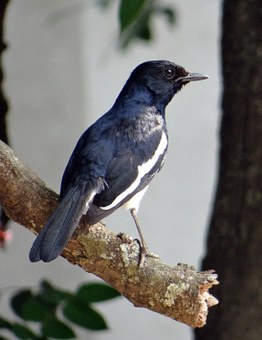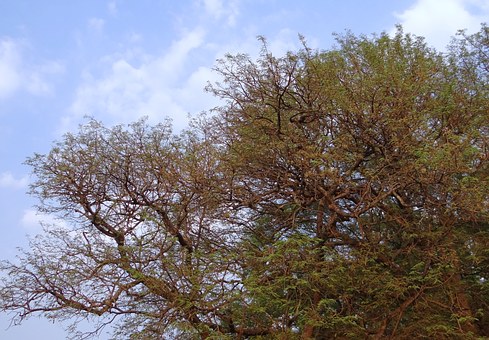Spain Travel Asturias The Tito Bustillo Prehistoric Cave And A Scenic Walk In Ribadesella

Well, my time in the high mountains of the Asturian Picos de Europa was over
. I checked out of the Hotel La Cepada, my cozy mountain abode with the picturesque views of the town of Cangas de Ons, got into my car and drove northwards towards the Atlantic coastline. After two days with rather poor weather, the skies were clearing up nicely and a gorgeous sunny day was in store for me.To get exposed to some of the prehistoric sights in Asturias I stopped at the Cave of Tito Bustillo, which is world-renowned for its Paleolitic art. Located on the western bank of the Sella River in the small town of Ribadesella, this cave was discovered by a group of adventurous young men in 1968. One of these young men, Tito Bustillo, died just days afterwards in a mountaineering accident and the cave was named in his honour. I joined a tour group to get a better understanding of this unique ancient heritage site.
The Cueva de Tito Bustillo is a karst cave that is entered through a main gallery with a length of 540 metres. Then there is a junction with a path leading off to the right to the original entrance of the cave while to the left we reached the room of paintings. Our expert guide pointed out various cave paintings of horses, cows, bisons, deer and reindeer, all animal species that would have lived here in the Paleolithic area.
The colours include purple, raw sienna and black, and some of them are still quite vivid many thousands of years after their creation. Our guide explained the difference between paintings of different epochs. Another section of the cave includes paintings of female vulvas, a prehistoric celebration of fertility. The cave paintings in the Cueva de Tito Bustillo are between 12,000 and 24,000 years old and they are of similar quality and importance as the caves of Altamira and Lascaux.

Now back out in the gorgeous sun, I drove back across the bridge over the Sella River and looked for the tourism office of the town of Ribadesella. I immediately took a liking to this town, which is set against the foothills of the Picos de Europa mountains, and nestled against the banks of the Sella River which forms a large bend here before flowing into the Atlantic Ocean. Not surprisingly, the town has chosen the slogan The Beach of the Picos de Europa, a perfect description of this scenic place.
The young lady at the Tourism Office gave me a two-minute summary of the town of Ribadesella and equipped me with all sorts of brochures that would allow me to go on a self-guided tour of town. Ribadesella is a small town of about 6,300 people that looks back on a long history. As the Tito Bustillo Cave illustrates, this area has been inhabited for tens of thousands of years.
Even the ancient Greeks already talked about settlements in the area. Naturally, the Romans colonized this region as well, and during the Middle Ages, Ribadesella became an important post for maritime trade, particularly salt, an indispensable ingredient in salting fish. Salmon fishing also was an important economic contributor in the area. The towns location on the Cantabrian Sea at the mouth of the Sella River proved to be highly strategic throughout the centuries.
In 1865 finally a wooden bridge was built over the Sella River that was replaced by an iron bridge which ended up being destroyed in 1937 during the Spanish Civil War. The concrete bridge we see today connects the western bank of the town and its long beach with the historic downtown area on the eastern side of the river. One of the biggest attractions in town is the International Descent of the Sella (Descenso Internacional del Sella), a popular canoe race that is held annually on the first weekend of August. The race begins in Arriondas and finishes in Ribadesella, an event that attracts thousands of outdoor adventurers every year.
I started my walk and headed into the narrow streets of the towns centre and within a few minutes I had arrived at the Parish Church of St. Mary Magdalene, built in 1936. The downtown area is very pretty, with narrow, cobble-stoned streets that are free of car traffic. City hall is located in a house made of heavy stone blocks, and numerous restaurants, bars and shops are dot the downtown area.
To get a better view of the town, I started walking up the hill on the promontory that stretches out into the ocean on the east side of town. As I strolled further along this promenade above the town, the views got better and better. The entire town with its red roofs, its big winding river and its long sandy beach on the other side of the Sella was stretching out in front of me. In the distance the jagged silhouette of the Picos de Europa mountains formed a hazy blue backdrop to this stunning panorama. I simply had to stop every 20 or 30 metres to admire the amazing views.
The elevated scenic walkway above Ribadesella ended up taking me to a promontory called Mirador del Gua which overlooks the eastern side of the Sellas estuary with a little chapel called La Gua. This was the perfect lookout point back to the town with the high mountains behind, down to the estuary of the Sella River and out to the sheer infinite expanses of the Atlantic Ocean. With these breathtaking views, Ribadesella had officially become one of my favourite destinations in Asturias.
I walked down from the chapel on a meandering footpath to head back into town on the riverfront boulevard. Great views of the river were to be had from here, and I admired a series of canoeists and kayakers who were working out on the river. The promenade was flanked by a series of clay murals that illustrate the history of Ribadesella, from its prehistoric settlements to its important role as a port town, to todays incarnation as one of northern Spains most popular tourist towns. Even the Prince and the Princess of Asturias vacation here
I strolled past several bars and cafs in the port area to get back to my car and make it over the bridge to the western bank of Ribadesella. This side of town is home to a long and wide sandy beach called Playa de Santa Marina. I sat down in an outdoor caf and enjoyed an ice cream cone while I looked back across the river to the elevated lookout point where I had just come from.
One really interesting unique feature of Ribadesella is its pretty riverfront promenade that is dotted with historic mansions that flank the sandy beach. These mansions, the so-called casas indianas, were built around the turn of the last century by rich emigrants who had returned home to built opulent villas. From the 1850s onwards, many Asturians emigrated to places such as Cuba, Mexico and Argentina to escape poverty and seek their fortune in the New World.

One of the many gorgeous "casas indianas" in Ribadesella - the Hotel Restaurante Villa Rosario
Many of those emigrants that had became wealthy and successful abroad returned to their home towns to retire and constructed impressive mansions. Plaques in front of the mansions explain the history of some of these gorgeous villas. Several of the owners had become wealthy in the Cuban tobacco trade or in the Mexican textile industry, and these villas were a testament to their success. Today, many of these villas are hotels or restaurants. The four-star Hotel Restaurante Villa Rosario, for example, is one of the most stunning villas and offers beautiful water views to its lucky clients.
Ribadesella had truly impressed me with its fantastic location at the mouth of the river Sella. But now it was mid-afternoon and I had to make way further east towards my destination for the night: the Posada de Babel, a family-owned hotel near the waterfront town of Llanes.
by: arther International Travel Tips - For A Wonderful Experience Travel On A Budget Know About Travel Insurance Benefits Of Travel Medical Insurance Geoholiday Credits A Great Trade-off For Any Travel Freak Dog Travel | What You Should Know Matrix Cellular Introduces Prepaid Sim For International Travellers Rajasthan Tour Guide by:Caper Travel Air Traveling Trend in India How To Travel With Young Children Speech and Language Pathologists - Permanent and Travel Jobs Our Exciting and Glorious Traveling Holiday Travel With An Insulin Pump